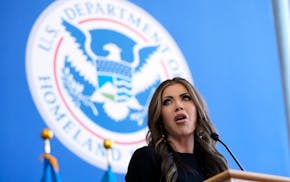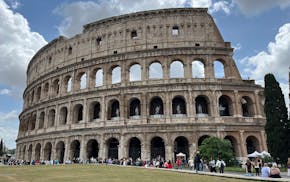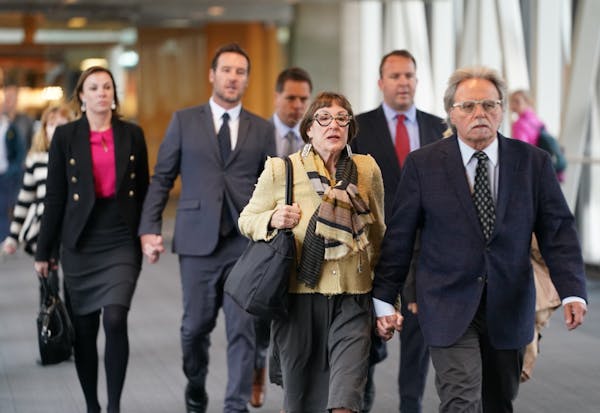Justine Ruszczyk Damond was killed by an officer she called for help.
He shot her without warning.
He shot her from a squad car with "To Protect With Courage — To Serve With Compassion" stenciled on the door.
He shot as she approached him barefoot and pajama-clad and eager to assist the police.
Her death was a crime, a jury ruled this week. Former Minneapolis police officer Mohamed Noor left the courtroom in handcuffs, guilty of murder and manslaughter.
Maybe the verdict will be some comfort to Damond's friends and family.
Comfort may be a long time coming for others in the community.
No police officer had ever been charged with murder for a line-of-duty shooting, not until Noor, a black Muslim immigrant, shot a white woman. The Minneapolis Somali community watched the trial with anguish.
"Over the last few years, our community has lost many sons and brothers to violence," Minneapolis City Council Member Abdi Warsame said in a statement Wednesday. "There is a feeling that we, as a community, are and will always be treated differently in both our everyday life and in institutional processes for being black and Muslim."
Noor's murder trial was so tangled up in race and politics and public policy, it's hard to tell where justice begins for some and ends for others.
There have been so many other cases where the races and verdicts were reversed. So many cases that never made it to trial. So many other officers who opened fire in the line of duty and never faced a murder charge.
This killing, the jury concluded, was the act of "a depraved mind."
If you listened to Noor and his fellow officers, it sounded more like the act of someone trained to live in terror of the population he serves. Every alley was a potential ambush. Every encounter was a potential attack.
"I know it's a scary way of thinking," Noor's former partner, Matthew Harrity, testified at one point during the trial. "I want to go home every night, so I want to do everything I can to go home to my family at night."
The two officers, he said, had no way of knowing Damond's "intentions" when she approached their cruiser.
"If you're ever in trouble, find a policeman and ask for help," my parents used to tell me when I was little. But that was before police had tanks and took warrior training. If the police were scared, maybe I needed to be a little bit scared of police.
"It is just not wise to startle a police officer," a reader wrote to me last week. "While one might think rushing toward an officer is safe, rushing toward anyone, much less an officer, who is already on high alert, is not smart."
Stay at a distance, the reader suggested. Wave your arms or call out for help. Keep your hands in view. Don't move unless they tell you to move.
"Be respectful of authority," the reader concluded. As if police officers were killer robots or improvised explosive devices that must be approached with extreme caution and utmost deference if you don't want to get your face blown off.
Minneapolis Mayor Jacob Frey has banned "warrior"-style training for police officers, hoping to offset that mind-set.
Minneapolis police union President Bob Kroll — modeling the sort of de-escalation technique you can learn only at warrior training — offered to provide the training free of charge for as long as Frey remains in office.
While those two slug it out, and while Noor awaits sentencing, hundreds of Minneapolis cops are out there protecting with courage and serving with compassion. They're breaking up fights and patrolling dark alleys. They're driving around with teddy bears in the trunks of their squad cars to share with the next scared little kid they meet.
Like firefighters running into a burning building or lifeguards diving into rough water, they value our lives at least as much as their own.

Brooks: Hard lives led to hard-won diplomas for these Minnesota high schoolers

Brooks: America mints its last penny. What's the new going rate for our thoughts?

Brooks: From big beavers to little bears, meet Minnesota's newest state symbols

Brooks: Kristi Noem's 'Hunger Games'? It could actually happen.


